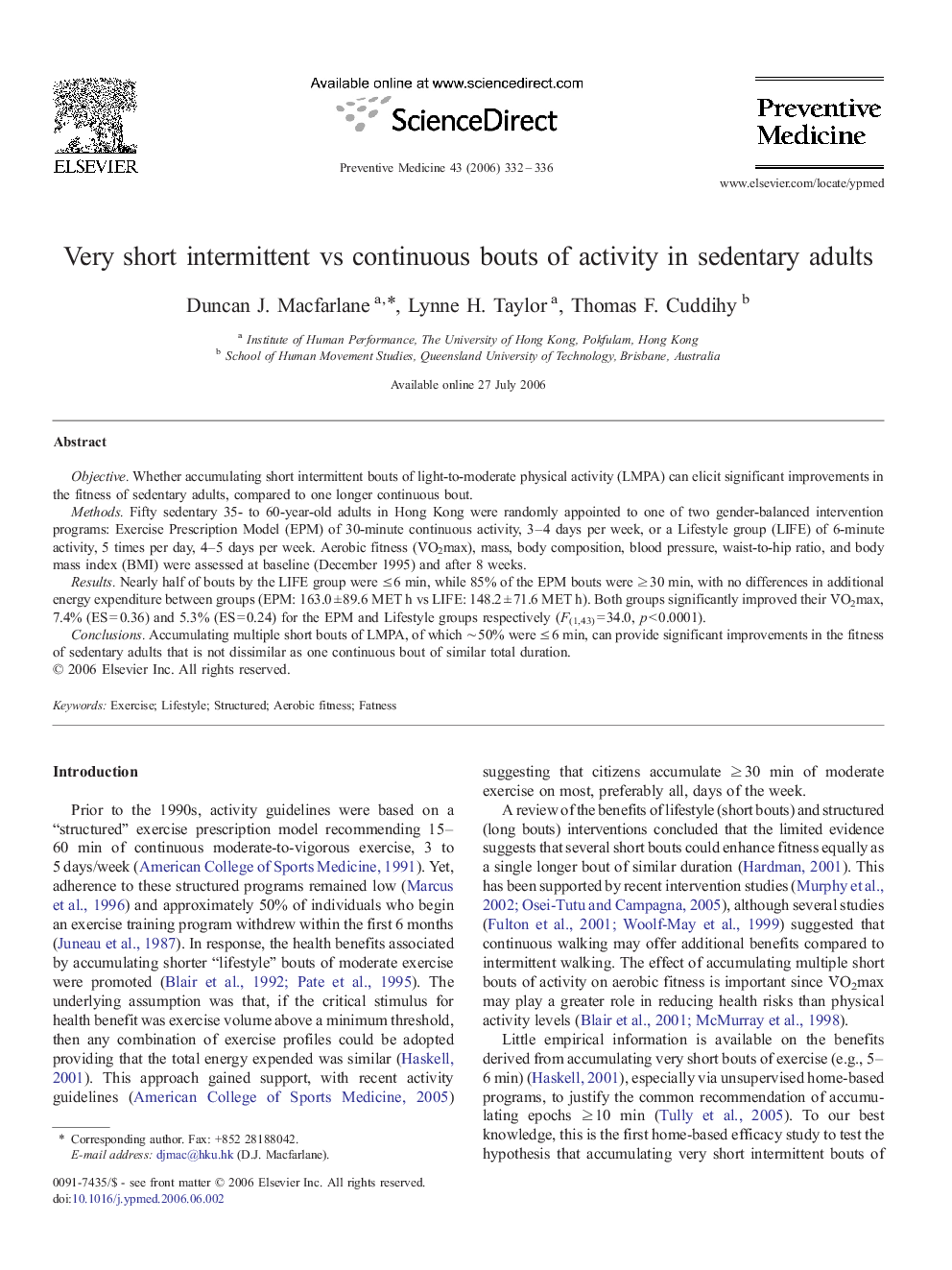| Article ID | Journal | Published Year | Pages | File Type |
|---|---|---|---|---|
| 3102253 | Preventive Medicine | 2006 | 5 Pages |
Objective.Whether accumulating short intermittent bouts of light-to-moderate physical activity (LMPA) can elicit significant improvements in the fitness of sedentary adults, compared to one longer continuous bout.Methods.Fifty sedentary 35- to 60-year-old adults in Hong Kong were randomly appointed to one of two gender-balanced intervention programs: Exercise Prescription Model (EPM) of 30-minute continuous activity, 3–4 days per week, or a Lifestyle group (LIFE) of 6-minute activity, 5 times per day, 4–5 days per week. Aerobic fitness (VO2max), mass, body composition, blood pressure, waist-to-hip ratio, and body mass index (BMI) were assessed at baseline (December 1995) and after 8 weeks.Results.Nearly half of bouts by the LIFE group were ≤ 6 min, while 85% of the EPM bouts were ≥ 30 min, with no differences in additional energy expenditure between groups (EPM: 163.0 ± 89.6 MET h vs LIFE: 148.2 ± 71.6 MET h). Both groups significantly improved their VO2max, 7.4% (ES = 0.36) and 5.3% (ES = 0.24) for the EPM and Lifestyle groups respectively (F(1,43) = 34.0, p < 0.0001).Conclusions.Accumulating multiple short bouts of LMPA, of which ∼ 50% were ≤ 6 min, can provide significant improvements in the fitness of sedentary adults that is not dissimilar as one continuous bout of similar total duration.
